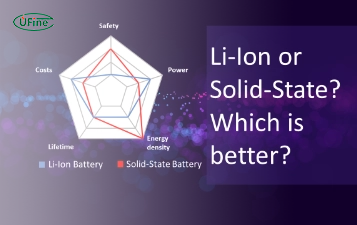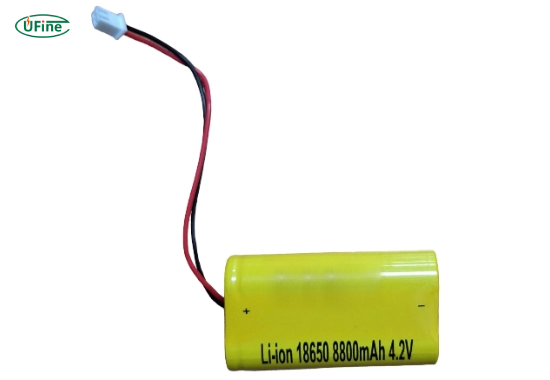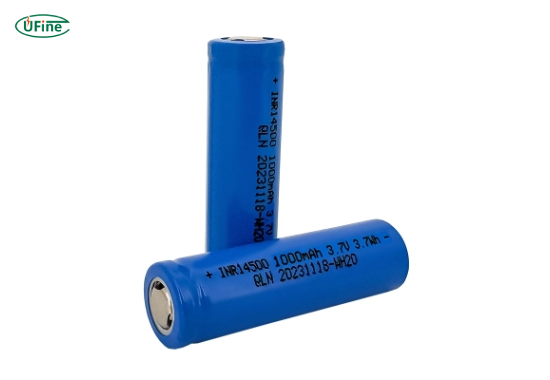
Quick Answer: 18650 batteries come in 3.7V (nominal) and 4.2V (max) variants. The “V” stands for “volts,” indicating voltage. 4.2V batteries deliver higher power for high-drain devices, while 3.7V batteries provide stable output for moderate-drain devices. Choosing the right battery depends on device requirements, charging specs, and desired runtime. This guide also explains what V stands for on a battery, differences in charging, performance, and applications for 18650 battery voltage.
18650 batteries are a cornerstone of modern rechargeable technology, powering devices from flashlights to electric vehicles. Understanding the differences between 4.2V and 3.7V 18650 batteries can help you choose the right battery for your devices. This article explains voltage, applications, charging, and performance differences to optimize your usage.
Part 1. What is the rated voltage of an 18650 battery?
The rated voltage of an 18650 battery, commonly 3.7V or 4.2V, refers to the average or maximum voltage during use. Here, “V” stands for volts, showing the electric potential the battery provides. Understanding 18650 battery voltage and what does V stand for on battery helps determine which battery fits your device. The 3.7V variant represents the average voltage output, while the 4.2V variant represents the maximum voltage when fully charged. These ratings affect compatibility, charging, and performance.
Part 2. 18650 Battery 4.2V
Characteristics
- Voltage Capacity: 4.2V lithium ion battery reaches a maximum voltage of 4.2 volts, higher than the standard 3.7V version, suitable for high-power applications.
- Increased Power Output: Higher voltage enables greater energy delivery for devices demanding substantial power.
- Charging Specifications: Requires chargers capable of precise voltage control to maintain safety and battery health.
- Capacity and Efficiency: Capacity is similar to 3.7V batteries, balancing energy storage and higher output.
Applications
- High-performance LED flashlights for outdoor, professional, or emergency use.
- Electric bicycles and scooters for extended rides and higher performance.
- High-capacity portable power banks to charge multiple devices efficiently.
- Advanced vaping mods requiring higher power outputs.
- Cordless power tools needing sustained high-power output.
Advantages
- Higher power output for energy-intensive devices.
- Enhanced device performance and efficiency.
- Optimized efficiency for longer runtimes.
- Extended operational time for compatible devices.
- Suitable for devices designed for higher voltage ranges.
Part 3. 18650 Battery 3.7V
Characteristics
- Nominal Voltage: The 3.7v 18650 battery has an average voltage of 3.7 volts during discharge.
- Stable Power Output: Maintains steady voltage throughout use, providing reliable energy.
- Standard Capacity: Suitable for moderate energy storage needs in consumer electronics.
- Versatility in Usage: Compatible with a wide range of devices requiring moderate power.
- Compatibility: Efficiently powers devices optimized for 3.7V operation.
- Charging Requirements: Standard lithium-ion chargers provide safe and efficient recharging.
Applications
- Compact electronics like Bluetooth headphones, smartwatches, and small gadgets.
- Low-power flashlights for everyday carry or moderate brightness.
- DIY electronics projects and hobbyist circuits.
- Energy-efficient sensors and environmental monitoring devices.
- Low-drain devices such as clocks, remote controls, or small toys.
Advantages
- Widespread compatibility across consumer electronics and DIY devices.
- Standard voltage rating ensures easy availability and usage.
- Moderate power output enhances battery lifespan and device efficiency.
- Stable performance in devices designed for 3.7V batteries.
- Versatility in applications due to balanced power and compatibility.
Part 4. Differences between 4.2V and 3.7V 18650 Batteries
| Feature | 4.2V 18650 Battery | 3.7V 18650 Battery |
|---|---|---|
| Nominal Voltage | 4.2V lithium ion battery (Max Voltage) | 3.7v 18650 battery (Average Voltage) |
| Applications | High-drain devices (power tools, vaping mods, drones) | Moderate-drain devices (DIY electronics, small gadgets) |
| Charging Requirements | Special chargers with precise voltage control | Standard lithium-ion chargers |
| Advantages | Higher power output for energy-intensive tasks | Greater compatibility and longer lifespan for moderate use |
Voltage Difference: 4.2V batteries reach a maximum of 4.2 volts when fully charged, while 3.7V batteries operate at an average of 3.7 volts. This affects charging, output power, and device performance.
Impact on Device Performance:
- 4.2V batteries increase power output, improving performance in high-drain devices.
- 3.7V batteries provide moderate, steady energy suitable for lower-drain devices, often extending battery lifespan.
Battery Capacity and Output:
- Both 4.2V and 3.7V 18650 batteries often have similar energy storage capacities.
- Output power differs: 4.2V batteries deliver higher power for demanding applications.
Effect on Lifespan and Functionality:
- Higher voltage can stress components and deplete faster if device is not designed for 4.2V.
- 3.7V batteries offer better longevity in compatible devices due to moderate power delivery.
Part 5. FAQs about 18650 battery voltage
What does V stand for on a battery?
“V” stands for volts, which measures the electric potential of the battery. For example, a 3.7v 18650 battery has a nominal voltage of 3.7 volts.
What is the voltage of a 3.7V 18650 battery?
A 3.7V 18650 battery operates at an average voltage of 3.7 volts during discharge, making it suitable for moderate-drain devices like small gadgets and DIY electronics.
What is the voltage of a 4.2V lithium ion battery?
A 4.2V lithium ion battery reaches a maximum voltage of 4.2 volts when fully charged, ideal for high-drain devices like power tools, drones, and vaping mods.
What is the difference between 3.7 and 3.6 18650?
The difference in nominal voltage, 3.7V vs 3.6V, is minor. It indicates the average voltage during discharge. Device performance may not be significantly affected.
Which devices benefit most from 4.2V 18650 batteries?
High-performance devices such as drones, gaming laptops, portable medical equipment, and power tools benefit from 4.2V batteries due to higher energy output.
Are 3.7V and 4.2V batteries interchangeable?
Not always. Using a battery with the wrong voltage can damage your device. Always check device specifications for compatibility.
What voltage should I charge a 3.7V lithium-ion battery?
A 3.7V lithium-ion battery should be charged up to 4.2 volts, which is the safe upper limit. Exceeding this voltage can damage the battery and create safety hazards.
Still unsure which 18650 battery to choose? Contact our experts or explore our full range of 18650 batteries including 3.7V and 4.2V options suitable for any device.
Related Tags:
More Articles

Solid State Battery vs Lithium Ion: A Comparative Analysis
Compare solid-state and lithium-ion batteries in safety, energy, charging speed, cost, and lifespan. See which works best for EVs, phones, and storage.
Learn safe LiPo battery storage tips, including charge levels, temperature, and humidity control, to extend battery life and prevent risks.
How Long Do Rechargeable AA Batteries Last?
Rechargeable AA batteries last 2–10 years (500–2000 cycles). Compare NiMH vs Lithium, tips to extend life, and when to replace batteries.
Industrial Battery vs. Regular Battery: A Complete Comparison
Compare industrial vs regular batteries by lifespan, performance, and cost. Learn which type suits forklifts, solar systems, tools, or common household devices.
18650 Cell or LiPo Battery Cell: Choosing the Best Battery
Compare LiPo vs 18650 batteries in safety, cycle life, discharge rate, and applications. Learn which battery is best for drones, EVs, and custom packs.




